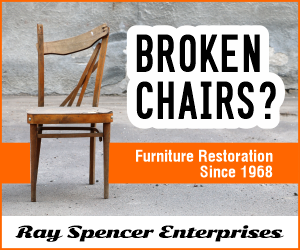Diminished value is the reduced market value after an article has been damaged and then repaired. This situation occurs most often in automobile claims when a vehicle has been in a serious accident, but the same scenario can apply to damaged furniture also.
Logically, if one has a fine crystal bowl that is dropped and shatters into hundreds of pieces, the item is a total loss. But what if that same crystal bowl had just a small chip on the rim? Has the bowl lost its entire value or just a percentage? More than likely just a percentage.
Deprecation occurs to an item through normal use and is commonly referred to as wear-and-tear. In general terms everything has a life expectancy. Although one might take good care of their upholstered furniture; eventually the fabric wears out when you’ve sat upon the upholstery year after year.
When determining the loss of value to wood furniture once it’s been repaired one must have an objective view point and exercise some common sense when making that decision. The basic questions asked are:
- Because of the damage and subsequent repair, has the function of the item changed?
- Has the repair completely restored the structural integrity of the damaged part?
- After the repairs have been made, is there a change in the appearance of the item?
- In making repairs has the craftsman added or removed something from the original construction?
To accurately determine diminished value, a qualified appraiser must evaluate the item before, during and after restoration.
Just as with an automobile, fine furniture must be properly maintained and cared for or the deprecation will be accelerated. A few examples would be placing a live potted plant on top of a table and the moisture from watering the plant damaging the finished wood. Recently, I inspected a furniture item that was sun bleached from bright sunlight coming in through a nearby window, which not only faded the color but dried out the wood.
Glue dries out and the joints on a chair weaken in time. Re-gluing wobbly chairs is normal maintenance. If left unattended the value of the chair depreciates.
Does removing the original finish and refinishing diminish the value of your furniture? There are so many variables in answering this question. Perhaps yes if you have a documented, museum-quality priceless antique. But if you have just a very good quality fine piece of furniture, refinishing can actually increase the value of the item. That is of course if the refinisher’s workmanship is superior.
As I approach each repair project, I consider whether I can be successful in making the item whole again. That is, can I restore the item to its condition prior to the damages having occurred? In almost all instances the answer is yes, but if not I’d advise my customer of this and provide an explanation as to why not.
Furniture touchup is a highly skilled art. The process involves removing or disguising a dent or a scratch and making it go away. “You can’t tell it was ever there” is a phrase I often hear from my customers.





0 Comments
Leave a comment